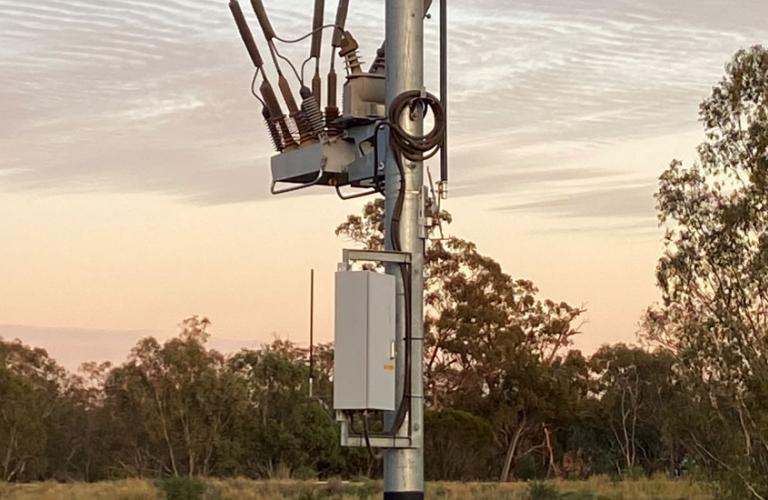#42 Marcela St., Damong Maliit, Brgy. Nagkaisang Nayon, Novaliches, Quezon City 1125, Metro Manila, Philippines

“As the utility industry moves to eliminate the use of SF6 gas in medium voltage switchgear, viable safe alternatives to SF6 load break switches are required, and the answer is already in operation in utilities networks today,”
— reports NOJA Power Group Managing Director Neil O’Sullivan.
“That answer is using vacuum interrupt solid dielectric reclosers to eliminate the use of SF6 gas and to provide a safe, field proven alternative, combined with a set of hook stick operated disconnect links to provide the visible break isolation.”
Modern distribution networks require adaptability in distribution switchgear. The move from centralised to distributed generation and changes in protection schemes mandate remote control and monitoring of the distribution network, vividly demonstrated by the rapid automation of the humble manual load break switches omnipresent in distribution networks. However, this process can be costly, so the question of network equipment and control standardisation becomes a financial necessity.
Fortunately, economic forces mean that a remote load break switch and a modern ACR’s prices have converged, prompting the question – why not achieve economies of scale by using one of these products for both applications? A load break switch can’t break fault current, but an ACR can certainly break both load and fault current, and so the natural candidate is the recloser with the caveat of working isolation.
At the advent of Recloser technology, ACR’s pricing was a traditional scalar multiple of corresponding remote load break switch devices, but with the global uptake of ACR technology the costs of this technology have largely converged. For the fiscally astute utility operator, any minor difference in cost between a remote LBS and a comprehensive ACR installation can be recouped through standardisation of warehouse spares, parts, training and engineering design simplification. So, the question becomes technical, how does the functionality align between these devices, and how do we design the ACR arrangement to meet an LBS application?
|
Feature |
LBS |
ACR |
|
System Architecture |
Switch and Controller |
Switch and Controller |
|
Fault Break Capability |
No |
Yes |
|
Isolation |
Yes |
Achieved with Series Disconnect Links |
|
Protection/CB Function |
No |
Yes |
|
Sectionalising |
Yes |
Yes |
|
Arc Fault Venting |
No |
Yes |
|
SCADA Control |
Yes |
Yes |
|
Operations |
10,000 (Typical) |
30,000 |
Table 1 – LBS vs ACR Capabilities
Table 1 outlines some key differences between the ACR and LBS, for which the functionality list of the ACR dwarfs the corresponding capabilities of the LBS. The essential reason preventing an ACR alone from being used as an LBS is isolation. ACR’s are a circuit breaker, for which modern examples typically use a vacuum interrupter (VI) as the fault break component. This VI can interrupt huge currents as the contacts are in a vacuum, quenching the arc, but at 38kV the gap be as small as 8mm.
This design is perfectly acceptable for a circuit breaker technology – but the consideration is using the device as a working point of isolation. Isolation is the objective for maintenance operation at site, where human operators are working downstream of the isolating device. Both modern SF6 Gas LBS or VI based ACR’s would flash over if their switching mechanism sprung a leak.
But there is a simple, cost effective solution – include off-load disconnectors or “links” in the installation.

NOJA Power OSM Recloser with Off-Load Isolation Links in Series (top of image) – Australia
When an operator is going to work on a site, they are inherently at site, and therefore a simple operation of using the ACR to break the current followed by utility operators pulling the links allows for visible isolation that cannot accidentally be removed by remote operation. For less than 5% of the cost of the ACR itself, isolation capability can be added to the ACR arrangement.
Of course, this also implies that an ACR can be used as an open point in a ring-configuration overhead distribution network. A single auxiliary supply VT should be sufficient for AC supply to the controller, as the device is either energised on both sides in the open position, or is closed to provide power in the case of failure of supply from either side. For immediate maintenance downstream of the device, a NOJA Power RC10 control has 5 days of hold up time, more than sufficient for most distribution network maintenance operations.

NOJA Power OSM Recloser with Offload Disconnectors in WA, Australia. Note the yellow Hot Stick for local isolation whilst maintenance is being carried out
Globally, NOJA Power have seen a major trend towards adopting the OSM Recloser as an ACR, Sectionaliser and Remote LBS. The standardisation of product across the applications results in major inventory, operational and training savings, along with arming utilities with greater negotiating power for larger volumes of a standardised product. With the simple addition of some inline-disconnectors, an ACR installation can safely be used as a point of isolation, whilst simultaneously providing a raft of protection, control, automation and fault interrupting capabilities that are far beyond the reach of any cost-equivalent remote load break switch. To find out more, visit www.nojapower.com.au or contact your local NOJA Power Distributor.